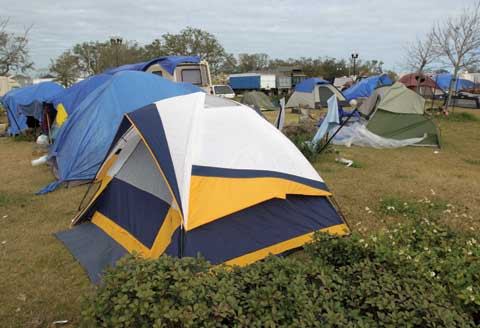“HUD is unable to make a decision to let us rebuild or not,” Greer says. “Here we sit, marshaling all of our forces and keeping track of our residents who want to come back. All other agencies involved in this want us to rebuild. I guess HUD feels they don’t have enough to comfort them in the investment of rebuilding.”
Others also remain cautious about the Crescent City. “There’s a combination of obstacles to getting housing built, but the issue right now is the levees,” says Mo Leaverett, executive director of Desire Street Ministries, a community service group in New Orleans. “That’s the first issue that creates the other [issues] for me. Who’s going to invest and insure in an insecure environment? Those people wanting to put a lot of money into redevelopment are concerned about the security and stability of the city.”
Many are looking to Washington for answers. “The federal government has to build the levees to a point where people and businesses feel confident in coming back,” Latsis says. “The levees are a very, very key issue. That’s the linchpin in whether New Orleans has any kind of resurgence.”
While Latsis and Abbenante continue to fight red tape so they can rebuild their units, Lynd wonders how to deal with his unexpectedly occupied property, and everyone waits for federal decisions on the levees and more, one starts to feel there are no real winners in this story, despite the billions of dollars being spent on rebuilding New Orleans.
But Greer says the biggest losers aren’t his colleagues. They’re his residents. “After all of these years of them living in an area of drugs and social misbehavior and all of the illness that go along with public housing, we finally took it down and rebuilt it brand-new–new streets, new walks, new houses, new community centers, new everything,” he says. “It’s the first nice thing that happened to many of those people. Now that the flood has come, they’re back in confusion, uncertainty, and sadness.”
–Les Shaver is senior editor at Multifamily Executive.
–Margot Carmichael Lester is a freelance writer in Carrboro, N.C.
